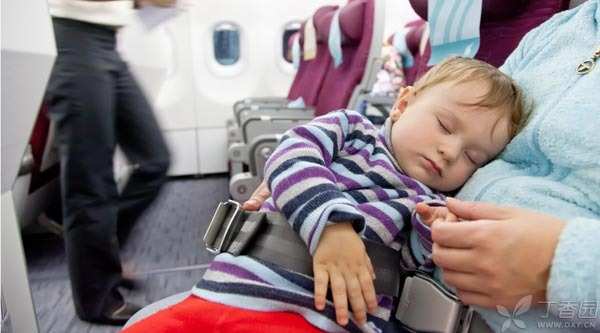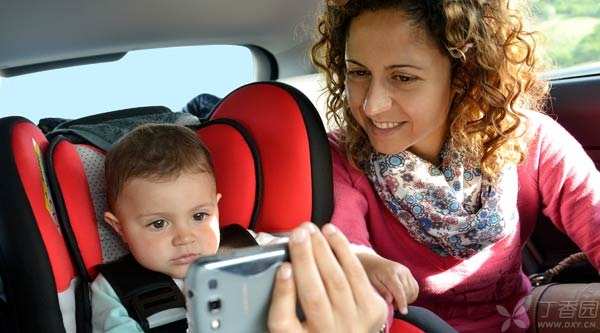
It is not uncommon for children to suffer from carsickness. They often suffer from vomiting and other discomfort during bumpy journey. Parents are both distressed and helpless. When they ask for help from doctors, they often ask:
[What if the child gets carsick? [How can I avoid carsickness? [Can children take carsickness medicine? ]
With these questions in mind, let’s take a look at all aspects of [carsickness].
[Carsickness] Is it what?
Carsickness is called motion sickness, also known as motion sickness, which refers to vertigo, cold sweat, nausea, vomiting and other symptoms when taking cars, boats, planes and other means of transportation.
Motion sickness is a common disease, which is relatively more likely to occur in children and adolescents.
Why do you get carsick?
There are two special structures in human ears, called [inner ear vestibule] and [semicircular canal], which are responsible for sensing body position and adjusting balance.
When a person takes a vehicle, the head position of the passenger changes continuously due to the continuous change of direction, bumpy up and down or rotation during the journey, resulting in strong stimulation of the organs responsible for balance.
When these stimuli exceed the tolerance limit of the organs responsible for balance, they will cause a series of physical dysfunction, such as vertigo, nausea, vomiting, sweating, listlessness and fatigue, which is commonly referred to as [carsickness].
Are children more prone to carsickness?
The high incidence age of motion sickness is 3 ~ 12 years old, because children’s nervous system development is not perfect and vestibular function adaptability is not strong, so motion sickness is easy to occur.
However, children under 2 years old almost never suffer from motion sickness, and the specific reason is still unclear.

How to prevent children from carsickness?
STEP 1 Don’t be hungry
It is best to eat 2 hours before the bus, and the food should be light and easy to digest. If you ride on an empty stomach, you may suffer from fatigue, dizziness and aggravation of carsickness symptoms due to [hypoglycemia].
2. It is inappropriate to eat too much.
Don’t let your child eat too much before taking the bus, and don’t eat snacks when taking the bus, otherwise it will easily lead to abdominal distension, nausea, nausea and other adverse conditions. You can go to the toilet before taking the bus to reduce the burden on organs such as gastrointestinal tract and bladder.
Step 3 Choose the right car seat
When taking the bus, choose the front row as much as possible and avoid the position above the tire to reduce bumpy vibration.
Open the car window at the right time for ventilation, and let the child’s head lean back against a fixed position or parents’ arms later to reduce head vibration and avoid dizziness.
When driving, parents should not smoke or spray perfume in the car, so as not to cause carsickness to their children due to the stimulation of smell.
Step 4: Divert your attention
When riding, watching fast moving scenery for a long time will lead to carsickness, so children should be guided to pay attention to other places.
Parents can play toys with their children, play some soothing music, or tell stories to their children.
In addition, don’t let children read books in the car, which is more likely to cause carsickness.

5. Comfort is important
Parents can choose to take their children when the weather is fine and the temperature is comfortable.
Whether it is a private car or a public transport, parents should try their best to choose air-conditioned ones. In the car, parents should pay attention to adjusting the temperature to prevent their children from being too cold or overheated.
Creating a comfortable environment can make children more relaxed, thus preventing carsickness.
6. Exercise regularly
Some studies have shown that the adaptability of vestibular organs to irregular movements can be improved through some movements (such as slides, swings, merry-go-rounds, roll-over on pads, etc.).
However, parents are not recommended to deliberately let their children do these exercises, because the occurrence of carsickness will gradually decrease with the increase of age and transportation experience.
7. Carsickness medicine, carsickness patch
There are many kinds of commonly used carsickness drugs, mainly anticholine drugs, antihistamines, sedatives and antiemetic drugs. Not all of these drugs are suitable for children, and the drugs applicable to children in different situations are also different.
Therefore, parents can first take the above-mentioned non-drug methods to prevent carsickness. If these measures are ineffective, they should consult a doctor before giving their children appropriate drugs.
Some parents will use carsickness stickers for children who are prone to carsickness and find them effective, but the following precautions must be made clear:
- The average adult can use one paste at a time. Children between 6 and 15 years old use half a patch every time. Children under 6 years old should not use it. Carsickness stickers should not be attached to damaged skin parts, nor should they be used at the same time as other carsickness drugs.
In short, before giving your child carsickness medicine or sticker, you must consult your doctor and read the instructions carefully.
The child is already carsick, what should I do?
If the child has suffered from carsickness during the journey, parents can take these measures:
- Open the window for ventilation, let the child lie on his back or keep quiet, and don’t move his head. Children who have vomited must first remove vomit from their oral cavity before they can lie down. If the child’s severe vomiting causes dehydration or other serious symptoms, the child should be taken to the hospital as soon as possible.
